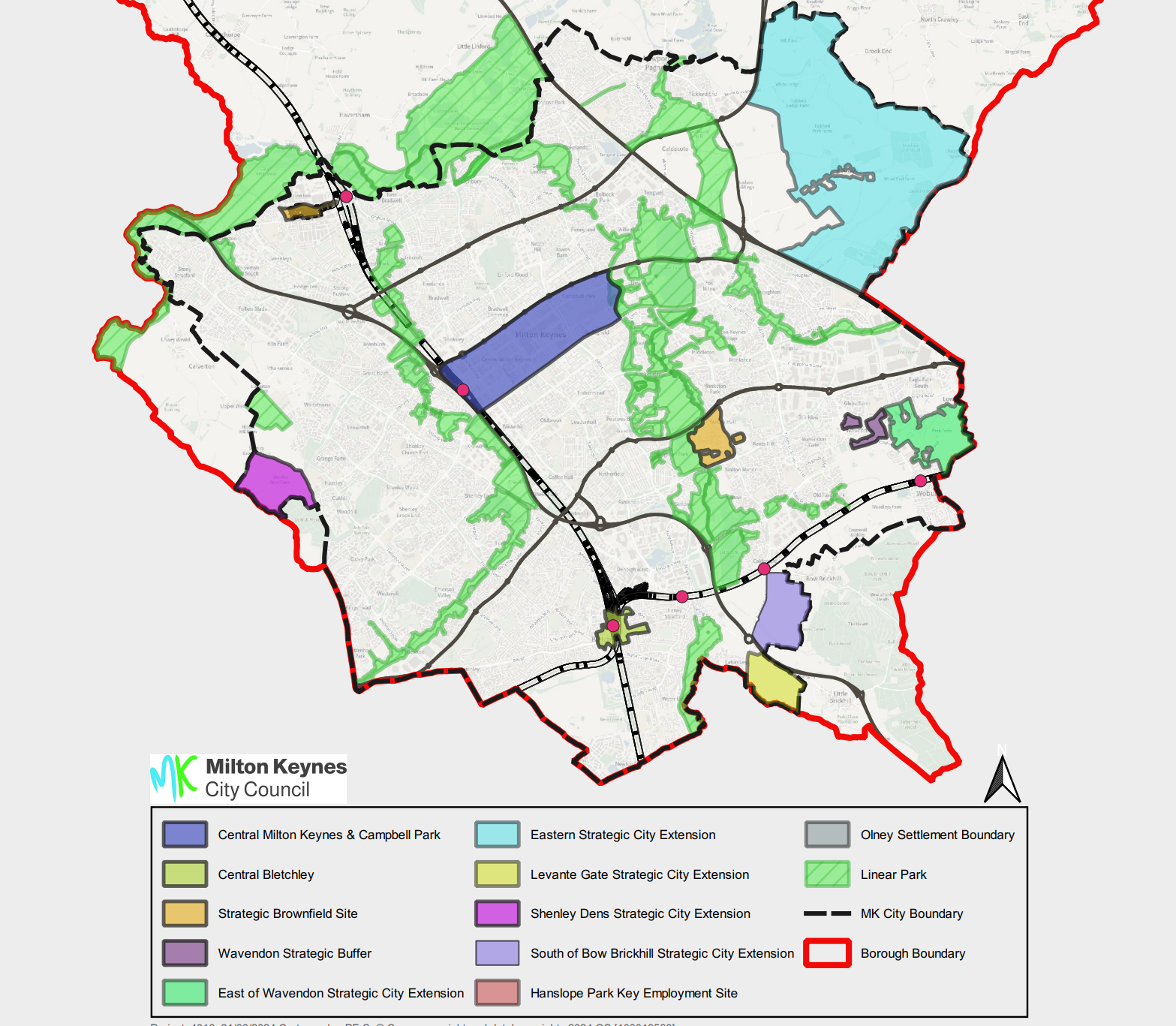Milton Keynes is an economic powerhouse and one of the fastest growing areas in the UK both in terms of population and jobs.
Since we adopted our last local plan, Milton Keynes has officially become a city and our economy has now grown to be larger than that of Cardiff, at over £16bn GDP. One in three jobs in the city are now in tech or in a related sector.
We’ve helped to deliver vital infrastructure to serve local people such as the multi-million-pound Cancer and Radiotherapy Centre at MK University Hospital, the UK’s largest electric vehicle charging network, and more than ten new schools in the last 10 years.
The city faces challenges and opportunities that the MK City Plan 2050 must address:
Population
By 2050, our population is set to grow by at least a third, between 382,300 to 410,000 people. Evidence suggests that 45% of that increase will come from people aged 65+.
Economy
From 2013 to 2023, the number of jobs in the city increased by 16.8% to 202,000, and jobs growth is forecast to continue. Around 433 hectares of additional office floorspace will be required by 2050, mostly in the city centre to accommodate a predicted 29,600 new jobs there. Additional land will also be needed elsewhere for warehousing and logistics.
Transport
Around 17% of households in Milton Keynes do not have access to a car, and this rises in areas of greater social deprivation. Our plan considers how to connect people to essential facilities easily. It also sets out requirements for a new mass rapid transit system, a faster and more convenient form of public transport, with stations located close to communities. It also protects our unique grid roads and redways.
Health
We predict 13,447 households either needing adaptions to their existing housing or requiring suitable new housing by 2050. Our plan sets out policies to create homes that are accessible and adaptable to changing needs. Although overall health and life expectancy in Milton Keynes is broadly in line with England as a whole, there are marked health inequalities within the city, for example women living in Woughton live for 18 fewer years in good health than women living in Olney. Our plan will help address this through better control of land uses that can have negative impacts on our health, create new learning and employment opportunities, make living a more active life easier, and ensure infrastructure supports new communities.
Facilities and leisure
Our model of provision for community facilities is out of date and new facilities must reflect what residents want. There are gaps in the provision of sporting facilities and how they accommodate different groups and needs. Our new MK Infrastructure Strategy will help us address gaps like these.
Housing
Through previous local plans, neighbourhood plans and planning permissions, close to 29,000 new homes are due to come forward by 2050. The MK City Plan 2050 will seek to allocate land for over 38,000 additional new homes, with a focus on existing urban areas. We are facing considerable housing pressures in MK, with many families living in temporary accommodation. Our plan looks to maximise the number of new affordable homes we secure from development to help families have their own affordable home.
Climate change
We declared a climate emergency in 2019. Our plan will set requirements that help reduce carbon emissions in the future, protect and expand green spaces, protect homes from flooding, and make walking, cycling and wheeling the preferred choice for getting about for more people.

